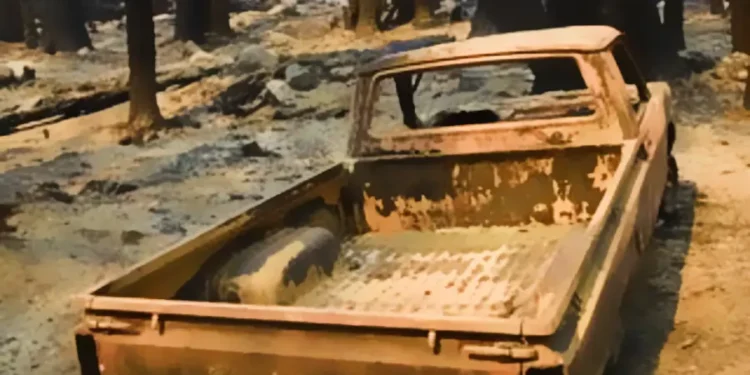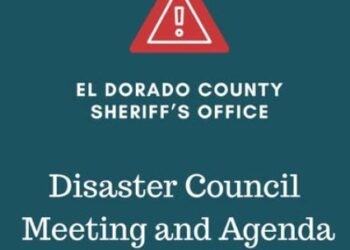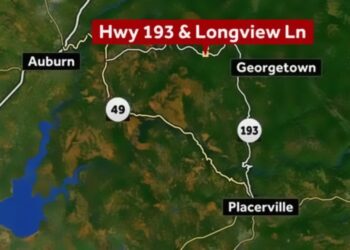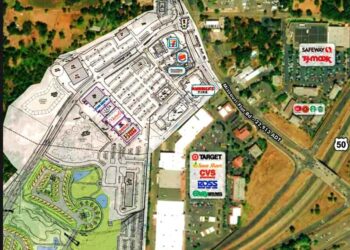PLACERVILLE, Calif. — The California FAIR Plan, the state’s insurer of last resort for homeowners who cannot obtain private coverage, has filed for a 35.8% average increase in dwelling fire rates — a move that could hit El Dorado County homeowners hard, especially those in higher wildfire-risk areas. The filing, submitted to the California Department of Insurance this fall, would take effect on policy renewals after April 1, 2026 if approved as filed, though regulators may reduce or reshape the request during review.
Key facts & timeline
-
What was filed: The FAIR Plan’s filing requests an average 35.8% rate increase for personal dwelling fire and allied lines; individual policy changes would vary widely by risk zone, with many homeowners seeing increases between roughly 40% and 55% while some low-risk properties could see reductions. The FAIR Plan says the new filing uses forward-looking catastrophe modeling and reinsurance costs allowed under California’s Sustainable Insurance Strategy.
-
When it could take effect: The FAIR Plan has proposed the new rates to take effect beginning with renewals after April 1, 2026, subject to the Department of Insurance review and any adjustments.
-
Why now: A surge in wildfire losses in 2024–2025 and the rapid growth in FAIR Plan enrollment — hundreds of thousands of policies have moved onto the plan in recent years — have strained the FAIR Plan’s finances and pushed it to seek rate increases to remain solvent and to pay expected future claims. The plan has also billed private insurers to help cover recent big losses, an action that has intensified scrutiny.
What it means for El Dorado County
El Dorado County sits in California’s Sierra foothills and includes thousands of homes in moderate-to-very-high wildfire-risk areas. That location makes the county more likely to see increases toward the high end of the FAIR Plan’s range. Local officials and wildfire-resilience programs have emphasized home hardening and defensible space as ways to reduce risk — and to qualify for insurance discounts under state programs.
Regional reporting in the Sierra Nevada basin shows similar patterns: in nearby Lake Tahoe and Truckee, analysis of the FAIR Plan filing indicates average changes around 33%–43% in many ZIP codes, with some pockets facing increases of nearly 50% under the filing. Those local examples are often a bellwether for the foothill counties, including El Dorado.
Stakeholders and tensions
-
FAIR Plan / insurers: The FAIR Plan says its filing reflects the need to match premiums with current and projected wildfire risk and to account for higher reinsurance costs. “By statute, FAIR Plan rates must be sufficient to pay anticipated claims and expenses,” a FAIR Plan spokesperson said.
-
California Department of Insurance (CDI): The department reviews all rate filings and may approve, reduce or modify the requested increases. Commissioner Ricardo Lara has pushed regulatory reforms (the Sustainable Insurance Strategy) to bring forward-looking models into rate setting and has also taken enforcement actions against the FAIR Plan over disputed smoke-damage claims. The commissioner has said he is working to protect consumers while stabilizing the market. “Our top priority is protecting Californians during this crisis and helping us recover,” Lara said when announcing protections for wildfire survivors earlier in 2025.
-
Consumer advocates and survivors: Consumer groups have criticized the FAIR Plan’s claims handling and urged regulators to resolve ongoing complaints before approving large increases. Advocates warn a large hike would be devastating for households already struggling with limited coverage and high premiums.
Local context: mitigation and discounts
El Dorado County has been designated a Fire Risk Reduction Community, and county resources explicitly link the state’s Safer from Wildfires initiative to potential insurance discounts for community- and property-level mitigation (home hardening, defensible space, Firewise membership). Property owners who complete qualifying mitigation work are encouraged to contact insurers about discounts, which can blunt the net effect of any rate increase.
What homeowners should do now
-
Check your ZIP Code and renewal date. The effective date is tied to when your policy renews after April 1, 2026. Your actual change will depend on wildfire risk score and other underwriting factors.
-
Ask your carrier and agent for a breakdown. If you are on the FAIR Plan, ask what your specific percentage change would be under the filing; if you have private coverage, check whether your insurer has filed for a separate increase.
-
Document mitigation work. Home hardening and defensible-space improvements can qualify you for discounts under state programs; keep receipts and inspection records. El Dorado County has guidance and links to the state Safer from Wildfires program. El Dorado County
-
Monitor CDI updates. The Department of Insurance posts rate filings, public notices and press releases and will publish the department’s decision and any changes to the filing. California Department of Insurance
Voices from the field
A FAIR Plan spokesperson defended the filing as necessary to maintain solvency:
“The FAIR Plan is working closely with the California Department of Insurance to ensure its rates reflect the current risk portfolio, expenses and growth as the state’s insurer of last resort.”
Commissioner Ricardo Lara, who has both advanced reforms and ordered enforcement actions in recent months, has urged balance between protecting consumers and ensuring insurers can pay claims.
“I am working on all fronts to make sure wildfire victims get the benefits they are entitled to, and they get it as soon as possible,”
he said in a statement earlier this year. California Department of Insurance
Bottom line
The FAIR Plan’s requested 35.8% average increase signals a major shift in California’s homeowners insurance landscape that could translate into steep premium increases for many El Dorado County residents — particularly those living in the most fire-exposed neighborhoods. The final outcome will depend on the Department of Insurance’s review, the degree to which homeowners can document mitigation, and whether private market alternatives re-emerge.









